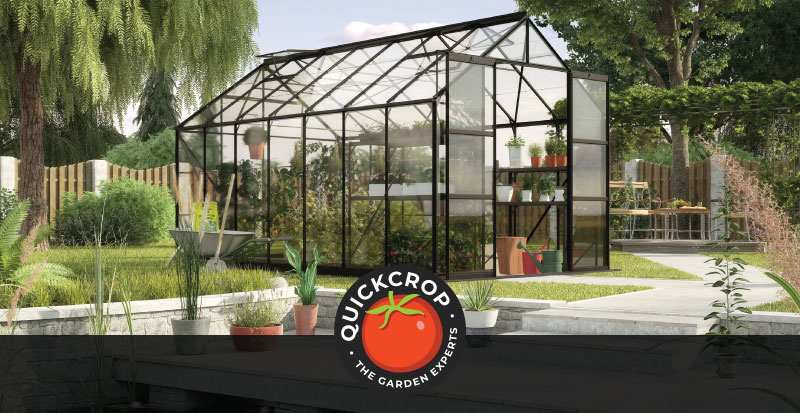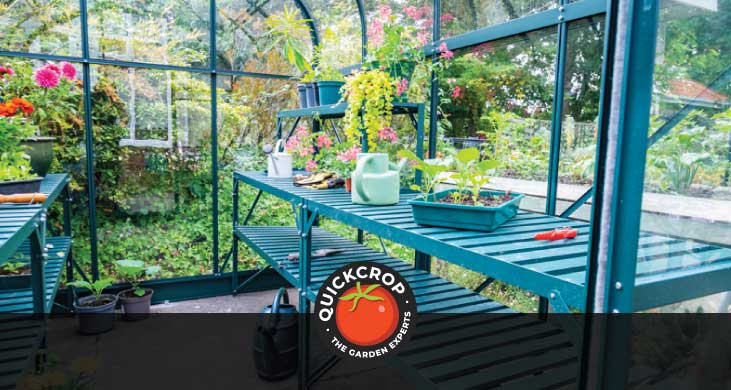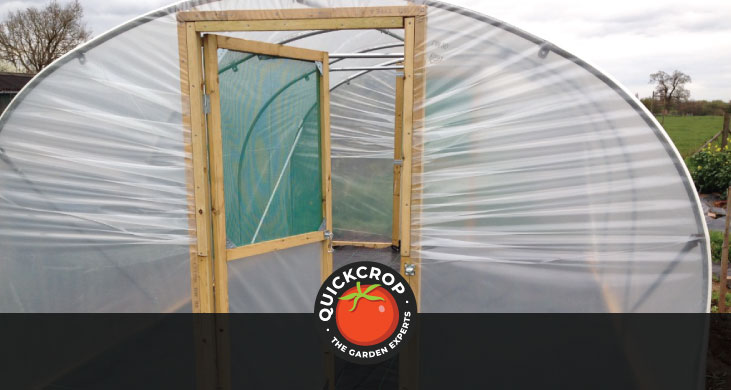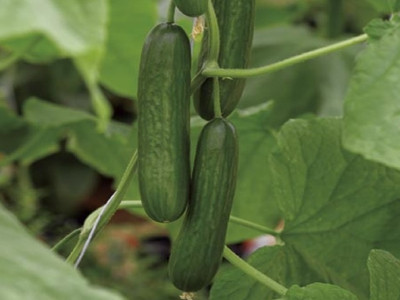Do I need a Greenhouse or Polytunnel?

Greenhouses and polytunnels are both structures that allow for regulation of climate and enable you to grow a wider range of vegetables, fruits and plants than you would be able to outdoors. Temperature, light and shade, humidity levels, irrigation etc can be controlled to varying degrees depending on which of the structures you utilise and what modifications you may add along the way.
Whichever structure you choose, a tunnel or greenhouse is almost essential now if the current weather pattern of long, cold and wet springs is to continue (which it likely is). This year I am expecting a similar story to last year: where there is more looking after seedlings and potting on indoors required because the date for safely planting outside is getting later.

The Polytunnel book - Joyce Russell
View ProductGreenhouses and polytunnels have distinct characteristics and advantages, and either one may suit you better depending on your goals or circumstances. Here are some of the factors to take into account.
Relative Expense
Polytunnels are by far the more
economical choice, especially if you have a large garden or area for planting. The larger the area you intend to use in square feet, the more money you will save with a polytunnel. This is simply because the polythene cover and simple hoop system is much cheaper than the more complicated greenhouse frame and glass.

While polytunnel polythene/plastic may need to be replaced after 5-7 years, it is normal for the cover to last 10 years or more if the structure is in a sheltered location, and if any rips or tears are repaired with polytunnel repair tape.
If you have a warm south-facing wall on your property, a less expensive greenhouse option is the 'lean-to' greenhouse, which is constructed against either a garden wall or an outer wall of your house. There are also small 'starter' greenhouses with a modest amount of room for potted plants and seedlings.

Tall Botanical Greenhouse
View Product
Ease of Construction
Again Polytunnels have the advantage here. Many greenhouses will need professional installment, or at least someone who really knows what they’re doing (here at Quickcrop we offer a nationwide assembly service for the Vitavia greenhouses that we supply).
A polytunnel on the other hand can be assembled in the space of a day DIY-style - it is a two-person job though so ask for some help!

Another possibly limiting factor is that greenhouses need to be constructed on a flat, hard surface. Polytunnels can be placed on uneven soil or gently sloping ground to no detriment.
Adaptability & Portability
The simplicity of the polytunnel structure makes it very adaptable. If your 'grow your own' hobby turns into a bigger project, you can extend a polytunnel by adding extra hoops and re-covering with new polythene. This can also be an opportunity to add a wider door area or extra ventilation.

A polytunnel can also be moved to a more suitable site (e.g. away from tree cover or in a better position to receive sunlight). Having said that, this may also require a change of cover unless you can somehow pull off the move without temporarily dismantling the structure.
Greenhouses are more of a permanent structure once they have been assembled. However they are very adaptable as they can be easily fitted with rainwater collection systems, automatic window venting and other methods that work towards providing an ideal environment for crops and plants to grow.

Aesthetics
This is one area where greenhouses really come into their own. Polytunnels have something of a functional, utilitarian look to them - while they are still a very pleasant environment to be in, they do not look so fetching from the outside.
The clean lines and fully translucent glass of a greenhouse look very attractive from the outside, and tend to emphasise the lush beauty of different plants and foliage within. Glass has another slight edge over polythene, as many of the plants that really benefit from being grown in a greenhouse are ones that thrive on direct light and sunlight.

Vegtrug Deluxe Potting Bench
View ProductA greenhouse can also be a very meditative place to spend your time, almost like having a portal to another, more peaceful environment. Just remember to put on some factor 50.
Durability
This one can be debated. While greenhouses are technically ‘for life’ once they’re installed, accidents can always happen, whether it’s wayward footballs or extreme weather; glass panels can be fairly expensive to replace.

Polytunnels on the other hand have become much more durable and weather-resistant, particularly if you look for the right materials like high tensile steel or heavy-gauge, insulating polythene.
Polytunnels can be specified to withstand severe storms without damage to the structure, and if the worst happens the replacement/repair costs can work out relatively cheap. Minor tears or rips in the polythene can be patched up solidly with polytunnel repair tape.

Heat Retention and Light
Greenhouses have superior heat retention in the summer months - indeed the temperature can creep up too far if you don't keep an eye on things. If a greenhouse is not adequately ventilated or shaded, you run the risk of heat stress and scorched plants.
The greenhouse structure can be cooled with shade netting or blinds, while shade paint is another option (the latter won't be as easy to remove). In the winter, greenhouses can be susceptible to drafts and may need artificial heating if you want to keep growing.

How to Grow in a Greenhouse
View Related ArticlePolytunnels have a more even heat retention throughout the year - they won’t match the heat retention of a greenhouse during the summer months, but they can be somewhat less susceptible to low temperatures in the winter depending on what kind of cover you have (thermic polythene can prevent heat loss during cold spells).
Another area where greenhouses come into their own is with light transmission - plants that enjoy direct sunlight will thrive in the environment of a greenhouse. Lush, exotic-looking plants are particularly suitable and popular with greenhouse enthusiasts.

This isn't to say that a polythene cover is a cloudy day by comparison, mind you. Polytunnel covers will let lots of light in, just not as much as a greenhouse on a sunny day. Some polytunnels are designed with a special material that diffuses or scatters sunlight, which avoids 'hot spots' and makes the most of sunlight even when it's lower in the sky.
Ventilation and Irrigation
Climate conditions can be more precisely controlled in a greenhouse via the use of HVAC systems, automatic venting windows and rainwater catchment systems. The HVAC systems can monitor temperature and take cooling action when the greenhouse is overheating.

Dial Max Min Thermometer From Tenax
View ProductThere is of course extra expense involved the more you rely on automation. A simple window thermometer can serve the same function if you have the time and means to keep a close eye on it. Electronic thermometers can be linked to your smartphone via wifi and alert you to climbing temperatures. Some windowpanes, meanwhile, can automatically open in warm conditions by means of a heated element.
The doors (or door singular as the case may be) are the most important source of polytunnel ventilation. In the warmer months they can be left open all day. Having both doors open ensures good airflow and circulation, which prevents condensation, mould and viral problems.

Side vents can also be a feature of a polytunnel, but they will only really be necessary for very long polytunnels where air has longer to travel.
Water catchment systems aren't as compatible with a polytunnel structure to its domed shape. However, you can still of course use rain water and keep a source as close to the polytunnel as possible for convenience. It's also very easy to set up an automatic watering system for your polytunnel - indeed, we supply raised bed irrigation plans that we ourselves use in our tunnel.

4ft Wide Garden Bed Irrigation Kit
View ProductFoggers/misters can be used to reduce the temperature in hot conditions; these are more commonly found in greenhouses due to the higher potential for excess humidity.
Which to choose?
Basically, a greenhouse or polytunnel both provide the same benefit - a sheltered environment with warmer temperatures than you will get outdoors. They can both be used for germinating seeds, producing seedling plants (for planting outside later) and for growing crops that need a lot of heat to produce effectively.

The main difference, other than those listed above, is size. If you only need space for sowing seeds and bringing on plants and for growing warm climate crops, a greenhouse is probably sufficient for your needs. If you are more interested in becoming self sufficient and to grow as many crops as you can in a season, a polytunnel may be the best option because of its size.
A larger covered growing area means you can grow multiple crops to maturity (including those normally grown outside). You can start growing earlier in the season, and carry on growing much later in the year than you would be able to outdoors. If all goes well, you can expect to extend your yearly growing window by 8 weeks or more.





